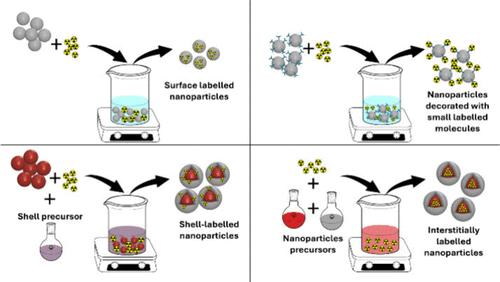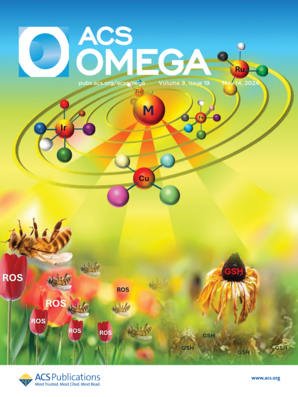Recent Advances in Metal Oxide and Phosphate Nanomaterials Radiolabeling with Medicinal Nuclides
IF 3.7
3区 化学
Q2 CHEMISTRY, MULTIDISCIPLINARY
引用次数: 0
Abstract
The utilization of nanomaterials in biomedical applications has surged in recent years; yet, the transition from research to practical implementation remains a great challenge. However, a promising area of research has emerged with the integration of nanomaterials with diagnostic and therapeutic radionuclides. In this Review, we elucidate the motivations behind selecting metal oxide- and phosphate-based nanomaterials in conjunction with these radionuclides, while addressing its issues and limitations. Various metal oxide- and phosphate-based nanoparticles, exhibiting low toxicity and high tolerability, have been proposed for diverse biomedical applications, ranging from bone substitutes to drug delivery systems and controlled release vectors for pharmaceuticals, including radionuclides for nuclear medicine imaging and therapy. Moreover, the potential synergistic effects of multimodal combinational therapies, integrating chemotherapeutics, immunomodulators, or hyperthermia, underscore the versatility of these nanoconstructs. Our comprehensive exploration includes the underlying principles of radiolabeling strategies, the pivotal attributes of nanomaterial platforms, and their applications. Through this perspective, we present the potential of nanotechnology-enabled nuclear medicine. Furthermore, we discuss the potential systemic and local applications of these nanoconstructs, considering their in vitro and in vivo characteristics, as well as their physicochemical properties.

用药用核素对金属氧化物和磷酸盐纳米材料进行放射性标记的最新进展
近年来,纳米材料在生物医学领域的应用急剧增加;然而,从研究到实际应用的过渡仍然是一个巨大的挑战。然而,随着纳米材料与诊断和治疗放射性核素的整合,一个充满希望的研究领域已经出现。在本综述中,我们将阐明选择金属氧化物和磷酸盐基纳米材料与这些放射性核素结合的动机,同时探讨其问题和局限性。各种金属氧化物和磷酸盐基纳米颗粒具有低毒性和高耐受性,已被提出用于多种生物医学应用,从骨替代物到药物输送系统和药物控释载体,包括用于核医学成像和治疗的放射性核素。此外,整合化疗药物、免疫调节剂或热疗等多模式组合疗法的潜在协同效应也凸显了这些纳米结构的多功能性。我们的全面探索包括放射性标记策略的基本原理、纳米材料平台的关键属性及其应用。通过这一视角,我们展示了纳米技术驱动的核医学的潜力。此外,考虑到这些纳米结构的体外和体内特性及其理化性质,我们还讨论了其潜在的全身和局部应用。
本文章由计算机程序翻译,如有差异,请以英文原文为准。
求助全文
约1分钟内获得全文
求助全文
来源期刊

ACS Omega
Chemical Engineering-General Chemical Engineering
CiteScore
6.60
自引率
4.90%
发文量
3945
审稿时长
2.4 months
期刊介绍:
ACS Omega is an open-access global publication for scientific articles that describe new findings in chemistry and interfacing areas of science, without any perceived evaluation of immediate impact.
 求助内容:
求助内容: 应助结果提醒方式:
应助结果提醒方式:


